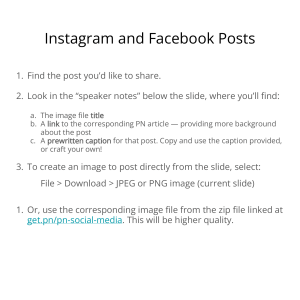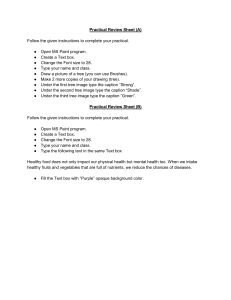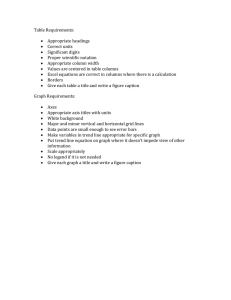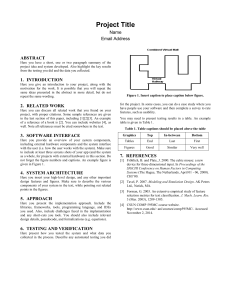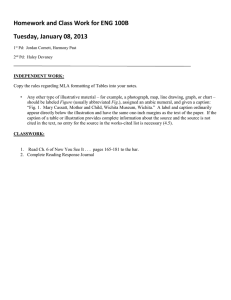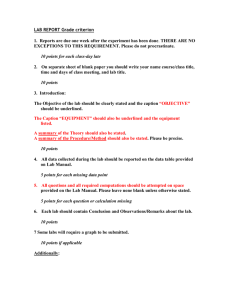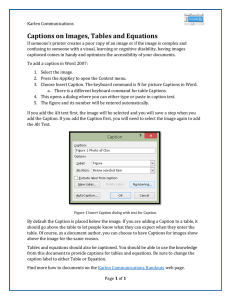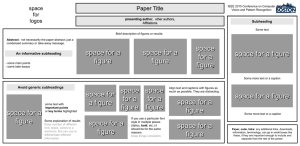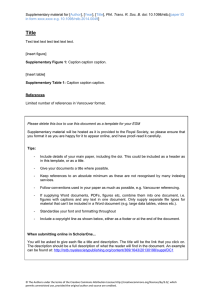Plate_Template_Wysor.ppt
advertisement
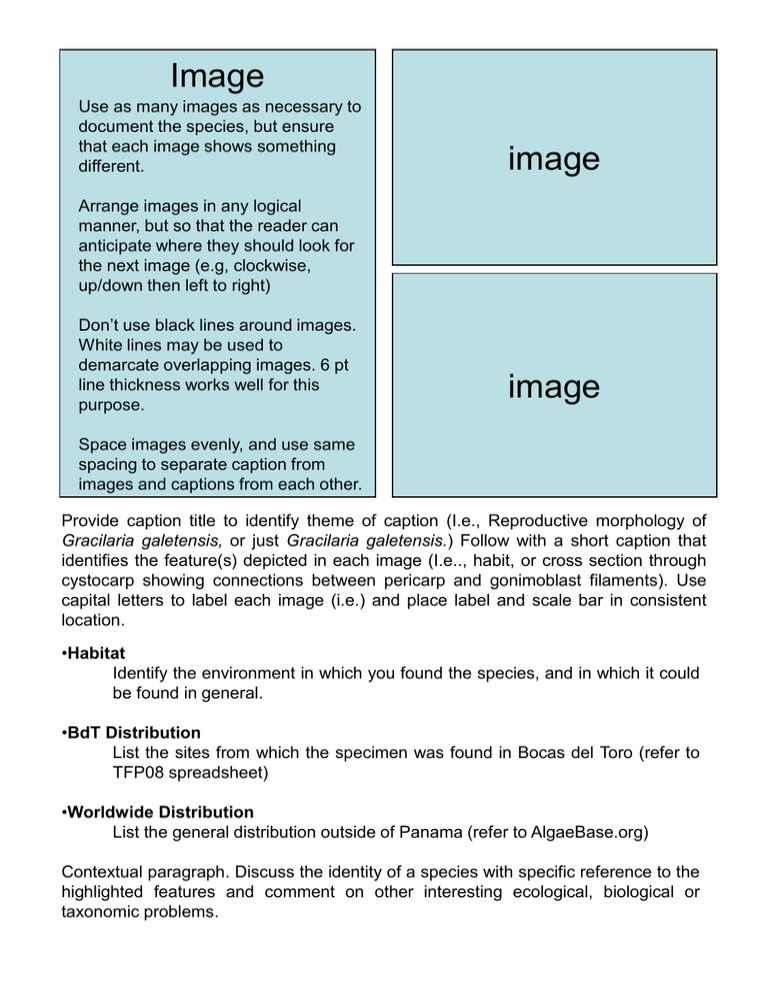
Image Use as many images as necessary to document the species, but ensure that each image shows something different. image Arrange images in any logical manner, but so that the reader can anticipate where they should look for the next image (e.g, clockwise, up/down then left to right) Don’t use black lines around images. White lines may be used to demarcate overlapping images. 6 pt line thickness works well for this purpose. image Space images evenly, and use same spacing to separate caption from images and captions from each other. Provide caption title to identify theme of caption (I.e., Reproductive morphology of Gracilaria galetensis, or just Gracilaria galetensis.) Follow with a short caption that identifies the feature(s) depicted in each image (I.e.., habit, or cross section through cystocarp showing connections between pericarp and gonimoblast filaments). Use capital letters to label each image (i.e.) and place label and scale bar in consistent location. •Habitat Identify the environment in which you found the species, and in which it could be found in general. •BdT Distribution List the sites from which the specimen was found in Bocas del Toro (refer to TFP08 spreadsheet) •Worldwide Distribution List the general distribution outside of Panama (refer to AlgaeBase.org) Contextual paragraph. Discuss the identity of a species with specific reference to the highlighted features and comment on other interesting ecological, biological or taxonomic problems.

